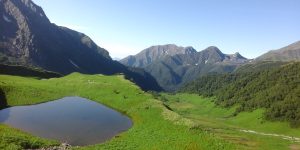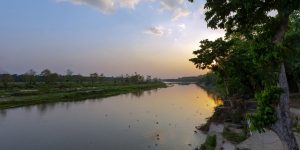“Where are we travelling” is the first line that comes to my mind when signing up for an assignment. The nature of assignments undertaken at beed and the passion to work out of the box have resulted in travels to diverse destinations and meeting diverse people across Nepal and across continents. Every assignment undertaken at beed is an adventure with perks of travel and an opportunity to learn. Some of the key learnings and observations gathered in the course of my travels are:
Moving out of your comfort zone and adapting to field conditions: Travel isn’t always as luxurious and glamourous as pictures posted by friends on Facebook and Instagram. At times one has to accept what is available. The most important travel lesson is that every field trip means moving out of your comfort zone. It can be terrifying to get out of your comfort zone to work in an unfamiliar environment with unfamiliar people but once you do, there is no better feeling than treading on unfamiliar territory. It is important to make plans and set targets but it is more important to be flexible, as things never work out as planned.
Crazy nostalgic field trips: Assignments at beed have always been enjoyable and at times, extreme: ranging from luxurious assignments in Pokhara to the adventurous cheese factory assignment in the Langtang Valley. I guess the nostalgia is always associated with the adventurous field trips. A big hi-five goes to the two colleagues who proved that despite all odds, the determination to succeed can help achieve anything. Truly, these ladies conquered the 5000-meter Tsergo Ri peak even if it meant popping 3 pills of Diamox to reach the summit. I finally realize what these little pills are capable of.
Similarly, a trip to a village in Sindhupalchowk to study the value chain of carpet, leather and lapsi landed us in big trouble. The vehicle we were travelling in got stuck in knee deep mud. The jeep refused to budge even an inch. The driver and I got down to digging out the vehicle. The risk was we were in the middle of nowhere with limited water, no food and no shelter for miles. My colleagues were enjoying the whole fiasco and laughing not realizing what problem we were in. Well, it took us almost 6 hours to get the jeep rolling.
The other memorable field trip has been exploring the mysterious villages of Lamjung and crossing paths with the ‘Honey Hunters’ of Lamjung. Having heard of the honey stories and the inquisitiveness to try out new things I had my first brush with ‘Wild Honey’. A concoction of hot lemon, mint and a spoonful of wild honey was just enough to knock me out cold. News got out that a researcher has been knocked out cold. The next day, while roaming the village with a heavy head, every villager who passed by was like “तिमी ठिक छौ” (Are you Fine?). To say the least, it was embarrassing.
Increasing connectivity:
Having made touchdown in almost 60 districts of Nepal, I have noticed that connectivity has increased between villages and so has the reach of ‘Red Bulls’. There are very few villages in the Terai and mid-hill areas which are not connected by roads. The technicality of these roads can always be debated as these have been built by way of so called bulldozer terrorism. However, social development has lagged behind. Women are still abused, denied basic education, the caste system still exists in these small villages and majority of rural Nepal lacks basic education and health infrastructures.
Limited infrastructure to support regional agreements:
With the failure to move ahead with SAARC highway we are now talking about BBIN (Bangladesh, Bhutan, India and Nepal road corridor) and OBOR (One Belt One Region). As we embarked on a BBIN field survey this July, I realized we have not done any homework on our side to see if such ideas can be supported with our existing infrastructure. Many issues came cropping up in my head such as the availability of infrastructure at custom points and the capacity of our roads and bridges to sustain the increased vehicular movements with the BBIN and OBOR agreements.
Trading cities have the worst infrastructure:
I always wonder why the biggest trading cities in Nepal have the worst infrastructure. In my recent trip to Birgunj, I realized that road conditions (not that is was any better in the past) in Birgunj have deteriorated to a point where one has to go to the Simara airport to see what a black topped tarmac looks like. The city is in such a chaos with pot holes and open drains and the stench of sewerage is overwhelming. People are seen walking on the main road through the flooded streets with shoes in hand. Better still, with every downpour the drains overflowed and there was water logging and ducks swimming on the street. I wonder why this city, which accounts for the largest industries and the heaviest movement of goods (import and export), has not made progress in terms of infrastructure.
Growing new cities in the east:
As a child, I remember driving with my parents to Darjeeling and every time we had to stop in cities such as Itahari or Biratnagar we complained about the bad restaurants and lodges. However, in the last decade, cities such as Itahari and Biratnagar, which were once considered as night stopovers, have made positive transformation. The spending capacity in these cities is increasing and consumerism is on the rise. The key drivers are increasing remittance and growing realty market. Can you imagine having to book a table on a Thursday evening in Biratnagar? Restaurants are priced similar to Kathmandu and the quality of food is at par with any restaurant in Kathmandu. However, the service level is low, which can be attributed to entrepreneurs not focusing on training staff and the inability to retain staff due to greener pastures in the middle east.
I guess when we look back it is the experience we hold close to our hearts that keeps us together at beed.







